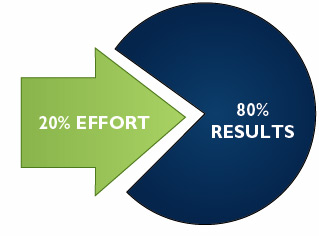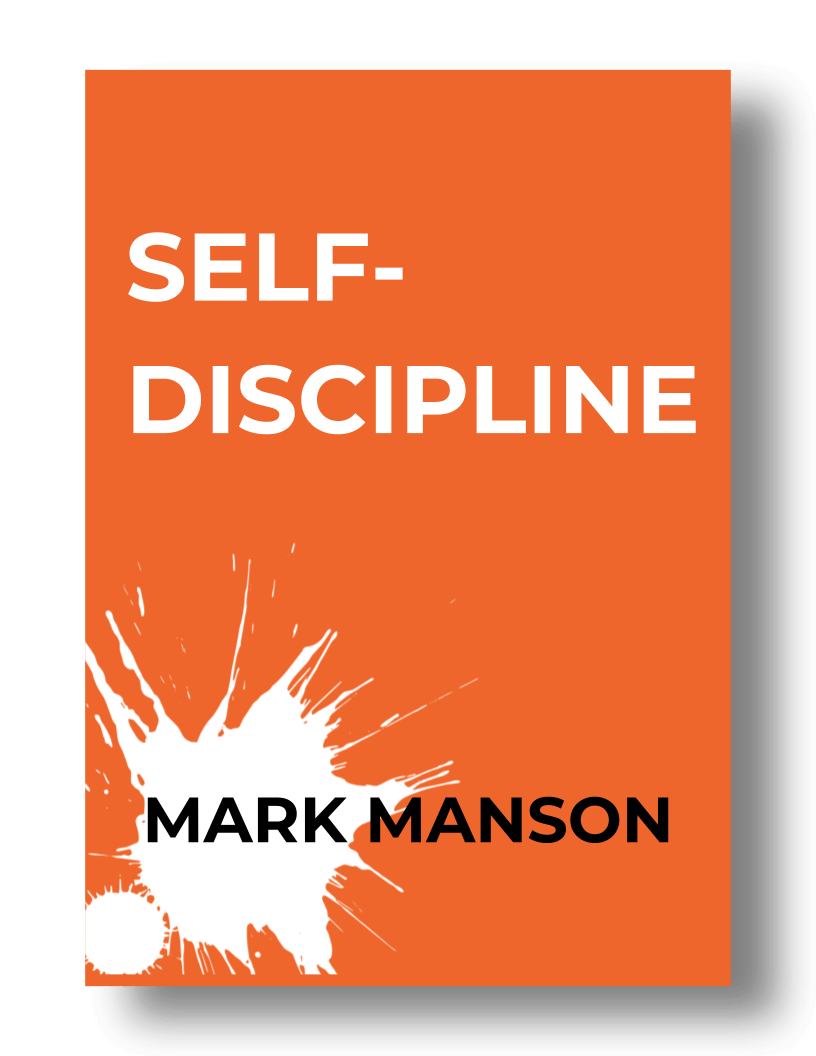The 80/20 Principle and How It Can Change Your Life
In 1906 there was an Italian economist named Vilfredo Pareto. One day, strolling through his garden, Pareto noticed that every year, 20% of the pea plants in his garden produced approximately 80% of the peas.
This got him thinking about economic output on a larger scale. Sure enough, he began to find that in various industries, societies and even companies, 80% of the production often came from the 20% most productive portion.
This became known as the Pareto Principle, or what is now often referred to as the 80/20 Principle.
The 80/20 Principle states that 80% of the output or results will come from 20% of the input or action.
 The 80/20 Principle has historically been most popular in business management situations. Businesses often found that roughly 20% of their customers brought in 80% of their sales. They found that about 20% of their sales reps closed 80% of the sales. They found that 20% of your costs led to 80% of their expenses. Microsoft and other tech companies have found that 20% of the bugs they found create 80% of the problems for their users.1
The 80/20 Principle has historically been most popular in business management situations. Businesses often found that roughly 20% of their customers brought in 80% of their sales. They found that about 20% of their sales reps closed 80% of the sales. They found that 20% of your costs led to 80% of their expenses. Microsoft and other tech companies have found that 20% of the bugs they found create 80% of the problems for their users.1
In terms of time management, businesses often found that 20% of their time created 80% of their productivity, and that 20% of their employees created 80% of the value.
As time went on, the 80/20 Principle became a popular management tool that was used widely to increase efficiency and effectiveness within businesses and industries.2 And it’s still widely taught today, in more areas than just business.
It’s been suggested that when it comes to pandemics (gulp), about 20% of infectious individuals are responsible for ‘superspreading’, transmitting and spreading 80% of the disease, which has included STD’s, SARS, and more recently, COVID-19.3,4
The examples go on and on. And of course, nobody was actually there with a yardstick measuring out exactly 80% and 20% for all of these items, but the approximate 4-to-1 ratio popped up constantly. Whether it was actually 76/24 or 83/17 is irrelevant. The point is that you are gaining maximal gains from a small input, or something is costing you way more than it’s worth.
Applying the 80/20 Principle
While widely used in business, few people traditionally thought to apply the 80/20 Principle to everyday life or the ramifications it could have.
For instance:
- What are the 20% of your possessions you get the most value out of?
- What do you spend 20% of your time doing that gives you 80% of your happiness?
- Who are the 20% of people you’re close to who make you the happiest?
- What are the 20% of the clothes you wear 80% of the time?
- What’s the 20% of food you eat 80% of the time?
Chances are these are easy questions for you to answer. You’ve just never considered them before.
And once you’ve answered them, you can easily focus on increasing the efficiencies in your life. For instance, the 80% of people you spend time with who only add 20% of the pleasure in your life (spend less time with them). The 80% of crap you use 20% of the time (throw it out or sell it). The 80% of the clothes you wear 20% of the time (same thing).
Identifying the 20% of the food you eat 80% of the time will probably explain whether you keep a healthy diet or not and how healthy it is. Hey, who needs to follow a diet? Just make sure to switch to where the 20% of food you eat 80% of the time is healthy.
It’s also highly likely that 80% of what you own brings you a small amount of your pleasure or happiness. An obvious place to start 80/20’ing yourself is with all of that extra stuff laying around.
Another is time and how we spend it. Clearing away distractions and setting up your most productive hours (morning or night) for success is how to get 80% of the days work done in 20% of the time.
When I first considered how the 80/20 Principle applied to my own life, I instantly realized a few things.
- A few of my hobbies (television shows and video games) accounted for 80% of my time, but only brought me 20% of my fulfillment.
- I didn’t enjoy a few of my friends who I spent 80% of my time with (hence I was not happy in my social life).
- 80% of what I spent my money on was not useful or healthy for my lifestyle.
Recognizing these things eventually inspired some hefty changes in my choices and my lifestyle. I dropped video games and television for one. I made efforts to identify other friends to spend more time with, and I paid more attention to what I bought with my money.
Get Your Shit Together — Here’s How
Your information is protected and I never spam, ever. You can view my privacy policy here.

80/20 and You
What changes could you make in your life today based on the 80/20 Principle?
At work, what tasks do you spend 80% of the time doing that bring in 20% of the returns (i.e., checking email over and over, writing memos, taking a long time to make basic and unimportant decisions, etc.)?
What is the 20% of your work that gets you 80% of the credit and recognition from your team or boss?
In your emotional life and relationships, what are the 20% of behaviors that cause 80% of the problems in your relationships? What are 20% of the conversations that create 80% of the intimacy with your partner?
These are important questions that most of us never even consider.
It doesn’t occur to us that there’s an efficiency to every aspect of our life, to everything we do. And not only is there an efficiency, but we have control and influence over that efficiency. It’s something we can take responsibility for and improve.
Obviously, the 80/20 rule is not necessarily a rigid dictum to live by. Not everything will fit so nicely into its nice, neat categorization. But think of it as a tool, a lens to view aspects of your life through. Sit down and think about it, maybe even write it out. You’ll likely be surprised with the realizations you come to.
- Sachowski, J. (2016). Implementing Digital Forensic Readiness. Elsevier. ↵
- Grosfeld-Nir, A., Ronen, B., & Kozlovsky, N. (2007). The Pareto managerial principle: When does it apply? International Journal of Production Research, 45(10), 2317–2325.↵
- Galvani, A. P., & May, R. M. (2005). Dimensions of superspreading. Nature, 438(7066), 293–295.↵
- Adam, D. C., Wu, P., Wong, J. Y., Lau, E. H. Y., Tsang, T. K., Cauchemez, S., Leung, G. M., & Cowling, B. J. (2020). Clustering and superspreading potential of SARS-CoV-2 infections in Hong Kong. Nature Medicine, 1–6.↵
